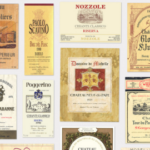Whiskey, sometimes spelled whisky, is a complex and beloved spirit that has captivated the palates and imaginations of aficionados for centuries. Originating from the Gaelic “uisge beatha” or “water of life,” whiskey comes with a rich history and a wide array of types. From the legendary Scottish single malts to the bold bourbons of America, whiskey’s diversity is part of what makes it so fascinating to explore. This guide is your map to the world of whiskey, helping you appreciate the nuances of each type and know how to savor them properly.
Demystifying Whiskey Types
Whiskey is more than just a spirit; it’s a category under which several distinct types fall, each with its own production process and unique flavor profile. These are the main varieties you should be familiar with:
Scotch Whisky
The Classic Elegance of Scotland
Scotch whisky is almost synonymous with sophistication. Made in Scotland, Scotch is typically distilled twice (though sometimes thrice) and aged for a minimum of three years. There are two primary types:
- Single Malt: Produced at a single distillery using malted barley. They are often considered the epitome of Scotch whisky, celebrated for their rich and varied flavors.
- Blended Scotch: A mix of one or more single malts with grain whisky. These blends offer consistency and a nuanced flavor profile.
Irish Whiskey
Smooth and Approachable
Irish whiskey is known for its smooth, light body, and triple distillation. It’s often the go-to whiskey for those just starting to explore the spirit. Common types include:
- Single Malt: Made from 100% malted barley and distilled at a single distillery.
- Single Pot Still: Also known as pure pot still, this unique Irish method includes a mix of malted and unmalted barley and results in a spicier taste than the single malt.
- Blended: Combines different malt and grain whiskies, providing a balanced and consistent profile.
American Whiskey
A Range of Flavors Across the US
American whiskeys come in various forms, the most notable being Tennessee whiskey and bourbon:
- Bourbon: Must be made from a grain mixture that is at least 51% corn and aged in new charred oak barrels. Known for its sweetness and high alcohol content.
- Tennessee Whiskey: Similar to bourbon, but made using an extra charcoal filtering process known as the Lincoln County Process, giving it a smoother flavor.
- Rye Whiskey: Made from a grain mixture that is at least 51% rye, offering a spicier and drier taste compared to bourbon.
Canadian Whisky
Light and Versatile
Often noted for its light and smooth profile, Canadian whisky can be made from a blend of grains and typically includes a higher percentage of rye.
Japanese Whisky
New World, Old Tradition
Japanese whisky has surged in popularity and is known for its balance and finesse. It draws inspiration from Scotch and often utilizes similar processes, resulting in some stunning expressions.
Other Whisk(e)ys
There are many other whiskies from around the globe, such as Indian whisky, Australian whisky, and more recently, African whiskies. Each brings a unique cultural twist and flavor palette to the table.
How to Savor Whiskey
Appreciating whiskey is not just about drinking it; it’s about engaging all your senses to savor the experience fully.
Tasting
The Nose Knows
Pour a measure into a tulip-shaped glass and take note of the color. Swirl it around to prime the glass with the spirit’s aroma, then take in the scent. Notes can range from the smoky-peaty tones of a Scotch to the caramel sweetness of a bourbon. Then, take a small sip, letting it coat your tongue to discern the full breadth of the flavor.
Pairing
Match Made in Heaven
Whiskey pairing doesn’t have to be complex. Dark chocolates, cheeses like cheddar and blue, and even a simple glass of water can enhance the tasting experience. The key is to find flavors that either contrast or complement the whiskey’s profile.
Cocktails
Versatility in a Glass
While many purists prefer to drink whiskey neat or with a splash of water, there’s a whole world of whiskey cocktails awaiting exploration. Classic drinks like the Old Fashioned and the Manhattan highlight the spirit’s rich notes and are always a hit.
Understanding Whiskey Lingo
To truly appreciate whiskey, it’s helpful to understand the language used to describe it. Here are a few terms to get you started:
Mash Bill
This is the recipe of grains used in the production of the whiskey. For example, a high-rye bourbon will have a higher percentage of rye in its mash bill.
Angel’s Share
The portion of whiskey that is lost to evaporation during aging in wooden barrels.
Peat
A major flavor component in many Scotch whiskies, peat is decomposed organic matter often used to dry malted barley, imparting a distinct smoky flavor.
Age Statement
The number on the label signifies the youngest whiskey in the bottle. The older the whiskey, the more complex and refined its flavors.
Where to Begin Your Whiskey Journey
If you’re just starting to appreciate whiskey, consider attending a tasting event at a local distillery or bar. It’s a great way to try different types and learn from experienced enthusiasts. Additionally, many whiskey brands offer virtual tastings, which provide an informative and entertaining way to explore new drams from the comfort of home.
The Takeaway
Whiskey is a spirit that rewards curiosity and exploration. With such a rich tapestry of types and flavors, there’s always something new to discover. Whether you’re sipping on a peaty Scotch beside a roaring fire or enjoying a smooth glass of bourbon with friends, each experience adds a chapter to your whiskey story. Cheers to your whiskey journey, and may it be as rich and varied as the spirit in your glass.













